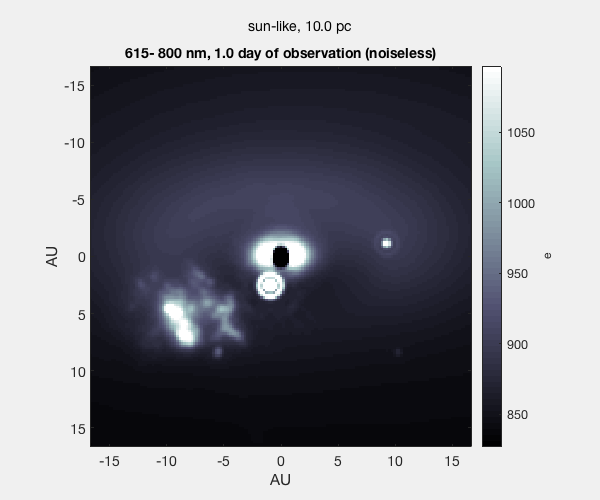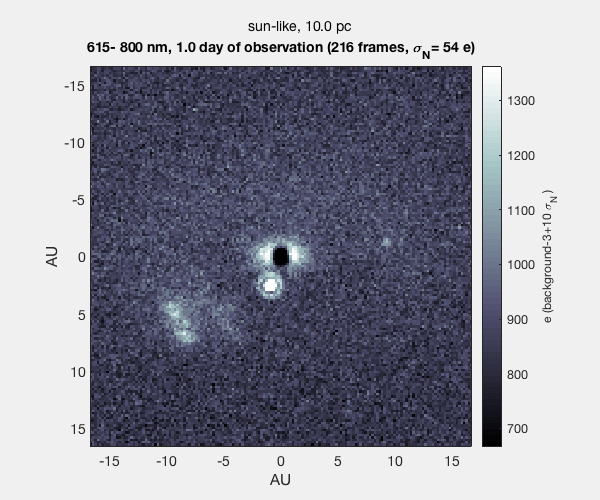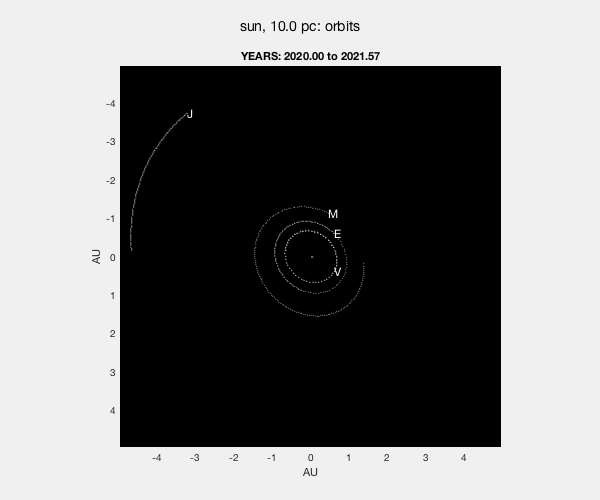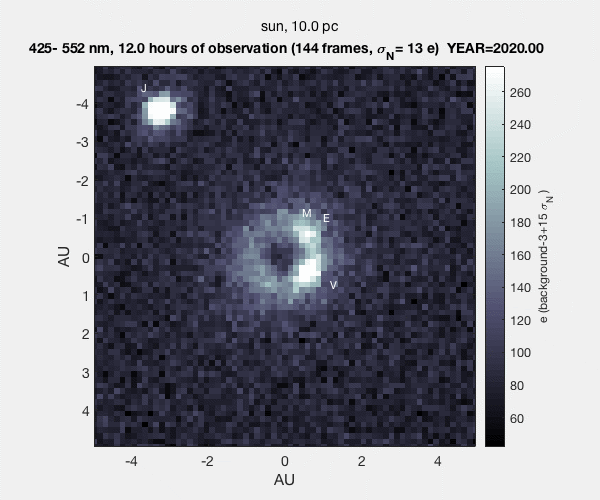Starshade Imaging Simulation Toolkit for Exoplanet Reconnaissance (SISTER)
Sergi R. Hildebrandt 1,a , Stuart B. Shaklan 1,b , Eric J. Cady 1,c , and Margaret C. Turnbull 2,1,d
1: Jet Propulsion Laboratory/California Institute of Technology. 2: SETI Institute, Carl Sagan Center for Life in the Universe.
a: srh.jpl.caltech@gmail.com, b: stuart.b.shaklan@jpl.nasa.gov, c: eric.j.cady@jpl.nasa.gov, d: turnbull.maggie@gmail.com
The Starshade Imaging Simulations tool is a versatile tool designed to provide enough accuracy and variety when predicting how an exoplanet system would look like in an instrument that utilizes an Starshade to block the light from the host star: SISTER's paper
The tool allows for controlling a set of parameters of the whole instrument that have to do with: (1) the Starshade design, (2) the exoplanetary system, (3) the optical system (telescope) and (4) the detector (camera). There is a built-in plotting software added, but the simulations may be stored on disk and be plotted with any other software.
The optical response of a starshade design is computed making use of the boundary diffraction wave method developed by Eric Cady (JPL/Caltech): SPIE, PDF
SISTER Handbook SISTER Imaging Basis
SISTER Examples



